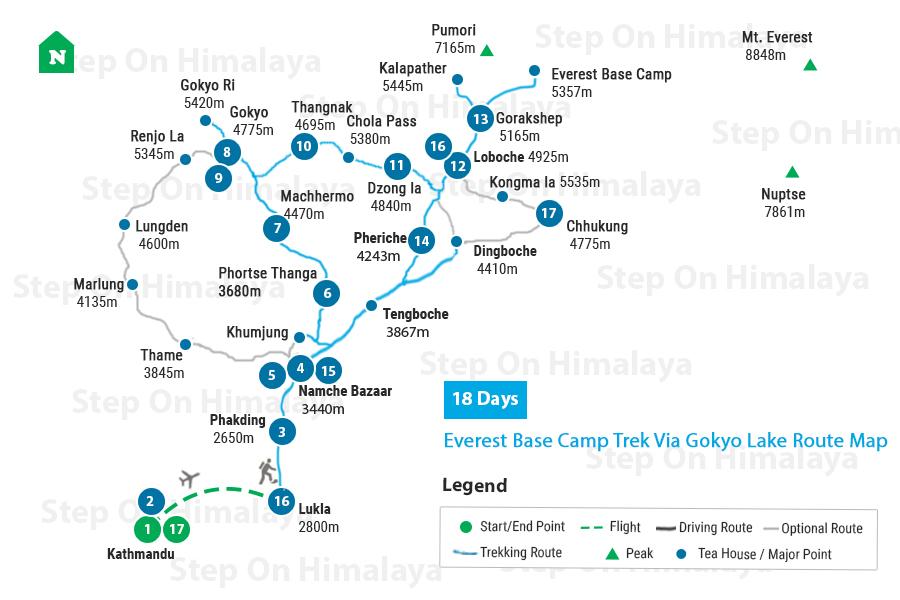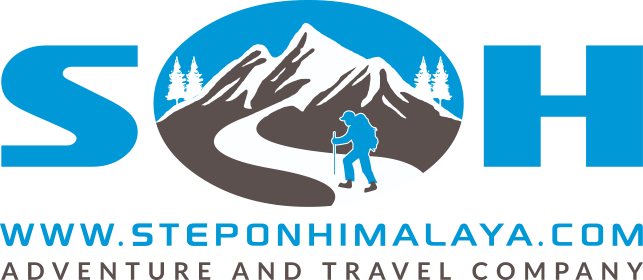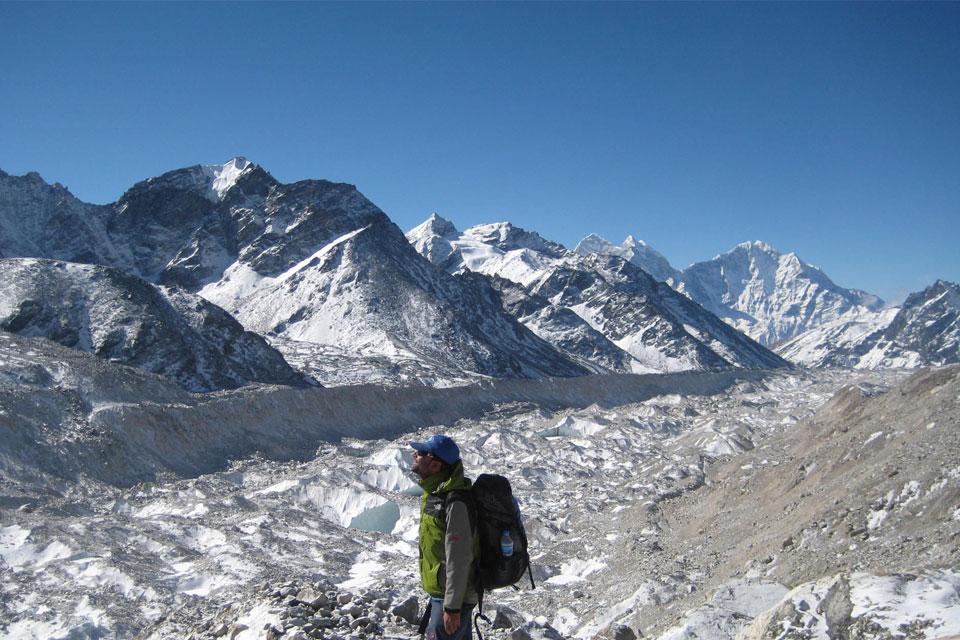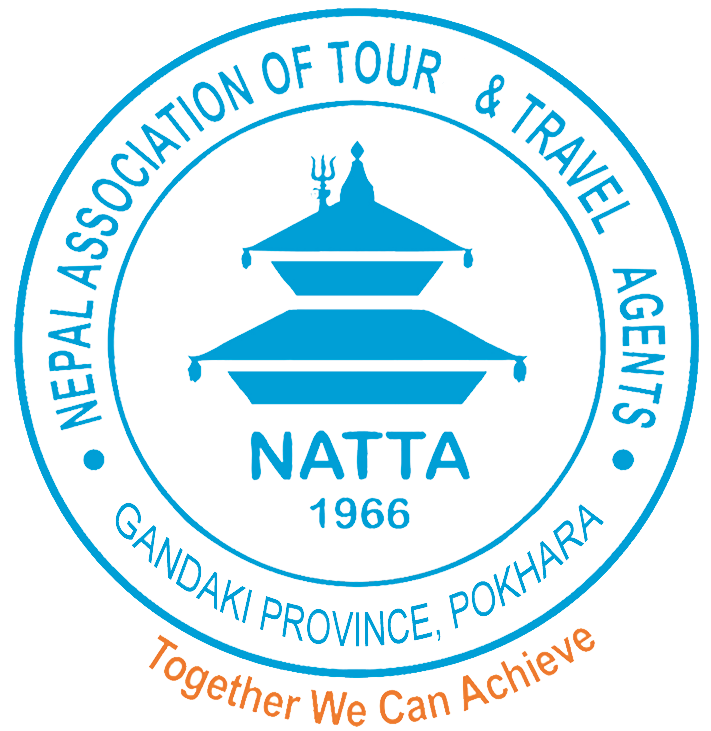Everest Base Camp Trek Via Gokyo Lake
Trip Overview
Trip at a Glance
Everest Base Camp Trek Via Gokyo Lake
How about a trekking adventure that includes two beautiful destinations in the Everest region? Yes, we are talking about Everest Base Camp Trek via Gokyo Lake. This trek combines two wonderful trekking destinations of Gokyo Lakes and Everest Base Camp. It also makes you trek over a high-altitude mountain pass of Cho La.
What is Everest Base Camp Trek via Gokyo Lake like?
A trek to the Everest Base Camp from a different route, this adventure lets trekkers explore beautiful places in the Everest region. Although the main destination is the base camp of Mt. Everest, you can also explore the beautiful Gokyo Valley.
This trek goes towards Gokyo Valley from Namche instead of heading towards Tengboche to go to the base camp. After a couple of days of walking from Namche, you reach the beautiful valley of Gokyo. You can explore and enjoy the beautiful glacial lakes in the valley. A full day of exploring Gokyo Ri and Lakes brings you some spectacular views of the mountains, glaciers, and lakes.
Later on, the trek continues towards the Everest Base Camp which requires you to trek over a high altitude pass. Cho La Pass is one of the most popular high-altitude passes in the trekking routes in Nepal.
The trail exits out of the Gokyo Valley and over the Cho La pass at Lobuche to meet the trail to Everest base camp. You make it to the base camp and to Kalapatthar eventually, which is an important destination highlight of the trip.
Why Everest Base Camp Trek via Gokyo Lake?
This adventure takes a bit longer to complete than a normal Everest base camp trek. But you will love this trek if you-
- Enjoy the long trekking adventure
- Love to explore the mountains, glaciers, and glacial lakes
- Like to explore the beautiful destinations in the Everest region
- Want to experience a trekking adventure that challenges your limits
Detail Itinerary
Is the proposed itinerary suitable for you?
If you are looking for a custom itinerary, please feel free to reach out to our team of professionals at any time.Trip Map

Cost Details
What is included?
- Local Sim card is given by the representative upon arrival at the airport (if more than 5 members in a group)
- Ground Transportation from and to the Tribhuvan International Airport
- Accommodation in twin sharing basis in the hotel of Kathmandu
- Accommodation in the guesthouses or teahouses or lodges during the trekking
- Trekking guide: English Speaking, experienced and Government Licensed
- 1 Porter per 2 trekkers including the salary, the insurance, the food, and the stay
- Domestic Flight (Kathmandu – Lukla – Kathmandu)
- Required Entrance Fees
- All the local and government taxes
- 3 meals (breakfast, lunch, and dinner) during the trekking
- Step On Himalaya T-shirt, trekking map and trip achievement certificate
- Duffle bag for the trekking
What is not included?
- Nepal Entry Visa fees
- International Flight tickets
- Medical and Travel Insurance should be ready before the start of trekking
- Extra porters upon request
- Trekking Gears and Equipment
- Lunch and dinner in Kathmandu in cases of early returns or late departures, regardless of whether voluntary leaving the trek or due to unforeseen circumstances.
- Expenses from natural disasters, mishaps, or unforeseen events (like weather or airline issues) are non-refundable and non-transferable, including if you voluntarily choose to leave the trek early or due to any medical emergencies
- Expenses for hot and cold beverages, alcoholic and non-alcoholic drinks, hot showers (USD 5-8 per shower), Internet or Wi-Fi, Charging electronic equipment, snacks, etc.
- Tips and gratitude for the staff
- Anything not mentioned in the “INCLUDED” section
Trip Info
Safety of our valued clients is always the paramount concern of Step On Himalaya. Please take note that the trekking leader/guide is the sole representative from Step On Himalaya and he is the local guardian during the whole trekking. Any kind of discomforts, alterations or extensions should be discussed with the trekking guide/leader. In case of any mishaps or emergency evacuation, follow the instructions of the trekking guide because he is an experienced staff and is capable of making the decisions that are beneficial for you during the trekking. So kindly, keep the communication line open and wide with him.
Another important note is the flight of Kathmandu to Lukla or Lukla to Kathmandu usually gets postponed due to bad weather conditions. In such conditions, you might have to stay longer. So it is always a request and advice to maintain a gap of 2 – 3 days for your International Flight in order to avoid possible delays or cancellations. There are alternate trekking routes like Annapurna, Langtang or any other trekking zones of Nepal. If you want to opt for another trekking adventure, please keep us informed. We will arrange for you the possible utmost best services and facilities.
Any kind of alterations or suggestions in the itineraries is heartily welcomed.
FAQ
Everest Base Camp Trek is categorized as Moderate, Adventurous, and Challenging/Strenuous.
There are different types of packages for Everest Base Camp Trekking. Depending upon the trekking you choose, the duration varies from 12 days to 22 days.
It totally depends upon your fitness level. If you are able to walk 5 to 6 hours daily, you can attempt the Everest Base Camp trekking. The duration of the trekking also matters.
The temperature varies as per the season of the year. It also depends upon the alterations in the elevations. It is from 5° C to 20° C normally in the morning during the months of April to September. While from the month of October to March, the temperature might fall below a minimum of - 10° C to a maximum of 15° C during the day time. It is usually cold in the night time.
The higher you go, the more change in the climate. There are abrupt changes in the weather at the Base Camp on Everest.
The best season to trek to Everest Base Camp is Spring during the months of March to May. The post-monsoon fall (September to November) is also considered to be the better season while Winter(December, January, February) is colder and rain might halt the trek during Summer or Monsoon (June to August) season.
The shortest and most convenient route is via Lukla. But there are various routes to reach Everest Base Camp. The route via Jiri is the oldest one. Another route is from Arun valley in Eastern Nepal, from the Makalu area passing through 2 high passes, from Rolwaling crossing the Tashi Labtsa high pass, etc.
The cost depends on what type of selected package. There are various types of packages to Everest Base Camp like 14 days-Everest Base Camp Trek, Everest Luxury Trek, Short Everest Trek, Everest Base Camp Budget Trek, Everest Three High Passes Trek, etc. For example, all the facilities are arranged in the five-star level to a possible extent in Everest Luxury Trek while there are some limitations in Everest Base Camp Budget Trek. In Budget Trek, you have to hire a porter with an additional cost, arrange the accommodation and meals in Kathmandu by yourself, etc.
No, there isn’t any age bar or limit for trekking to Everest Base Camp. But it is always essential that the trekker be in good shape of fitness and possess an optimistic attitude.
A trekker has to walk a minimum of 5 to 8 hours daily.
Yes, definitely. Elevation change is an important part of the trek. As there is a lot of walking up and down the hill, there is an elevation change every day. However, the range of change differs from day to day. It is mostly an uphill trek up to the destination and downhill on the way back. However, the trail winds up and down the mountains throughout the trek regardless of the elevation difference for the day.
Nepal offers trekking adventures throughout the year. However, the autumn and springs seasons are the best seasons to go trekking in Nepal. The months of September-November and March to May offer the best weather and atmosphere for trekking. Althgouh high altitude trekking is quite difficult and impossible in winter season, low altitude trekking can be done throughout the year.
Many people confuse trekking with climbing while these are completely different activities. Trekking is a walking activity in the mountains below snowline while climbing goes way above snowline to the top of a mountain. Trekking is much easier than climbing because you need to learn technical skills to climb a mountains.
Although age is not a bar to go on a trekking adventure in Nepal, you certainly need to consider a few factors before going on a trek. The basic requirement for trekking in Nepal is good fitness level regardless of your age. Since the activity involves a lot of walking up and down the mountains, you need to be fit enough to indulge in the activity for multiple days.
We highly recommend taking a guide with you when you go on the trekking adventure. Even if the trail is well-trodden and has many trekkers trekking, you need to have a guide for many reasons. First of all, a guide is not only the person to show you the trail. A trekking guide has a huge responsibilty of completing the adventure ensuring the safety of trekkers in the strange mountains. Moreover, the guide will also make your trip more than an adventure. It becomes a lifetime experience.
The mountains now have basic teahouse and lodge accommodations for trekkers. You can spend overnight in the warmth of guesthouses called teahouses during the trek unlike tented camps in the past.
The most common food during the trek is Dal Bhat. However, you can choose other food items from the menu. The food items differ from region to region.
You need to prepare your stuff wisely for the trek. The backpack you get ready for the trek should have all essentials and avoid any unnecessary stuff in there. Check this equipment list for a better understanding of what to pack for the trek.
As a high altitude trekking adventure, the trek always has a risk of getting altitude sickness. While it is not predictable who, where, and how they will get it, we all need to be well-aware and prepared for the unwanted. As we gain altitude during the trek, we should be more careful on our pace of walk, food, water, rest, and recovery. Being careful and taking it easy in the mountains can reduce the chance of getting altitude sickness.
Yes, permits are necessary for the trek. Since, you are going on our package, we take care of everything. You do not need to worry about arranging the permit for yourself.
When you are on our trek package, we provide porters to carry your backpack in the mountains. A porter carries the backpacks of two trekkers.You suggest you to keep your backpack around 10 kg.
Yes, you will need some cash in the mountain. Although your major meals are included in our package, you may need money for drinks, shower, souvenir shopping, wifi, device charging, and tips to guide and porters at the end of the trip.
We will brief you on how much to take on the first day of the trip when we meet in Kathmandu.
We focus on small group adventures to ensure that every one is well-taken care of and they enjoy the trek. We keep our group to the maximum limit of 16 people.
In that unfortunate case, we will make sure that you are well taken care of. If you cannot continue your journey further towards the destination and want to rest or return back, we will arrange a porter to be with you and take care of you while rest of the group members continue the trek.












